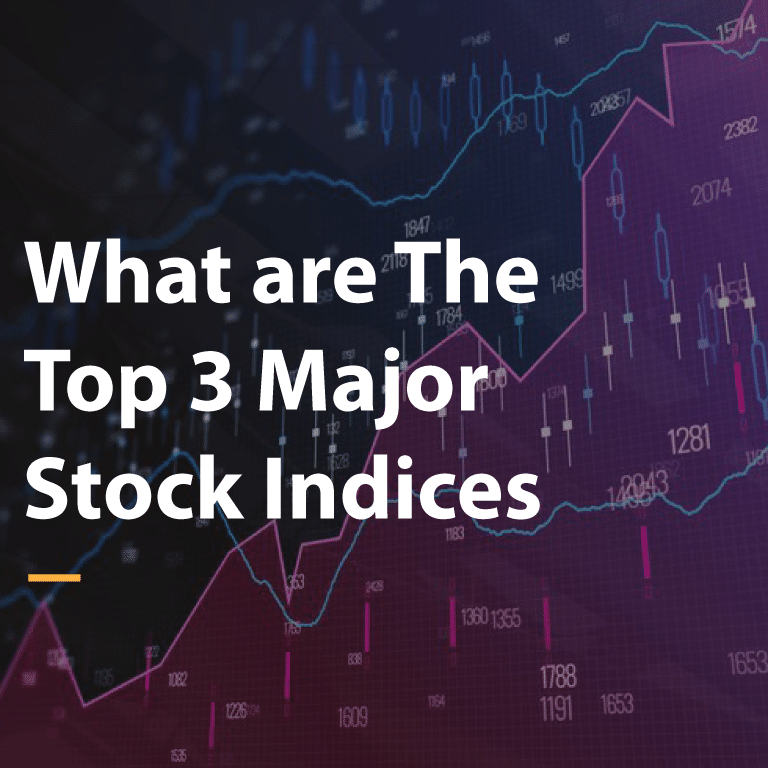Contents
In the intricate landscape of the stock market, investors rely on key indicators to gauge the pulse of the economy and guide their investment strategies. Among these indicators, perhaps none are as closely watched and analyzed as the top 3 major stock indices: the Standard & Poor’s 500 (S&P 500), Dow Jones Industrial Average (DJIA), and Nasdaq Composite. In this comprehensive guide, we delve into the intricacies of these indices, exploring their methodologies, significance, and the insights they offer into the dynamic world of finance.
Top 3 Major Stock Indices: The Standard & Poor’s 500 (S&P 500)
The Standard & Poor’s 500 Index one of the 3 Major Stock Indices, often referred to simply as the S&P 500, stands as a cornerstone of the global financial markets. Comprising 500 of the largest publicly traded companies in the United States, the S&P 500 serves as a barometer for the broader stock market and the overall economy.
Methodology and Composition
The selection of companies for inclusion in the S&P 500 is based on various factors, with market capitalization playing a pivotal role. The index is weighted by market capitalization, meaning that companies with higher market values exert a greater influence on its movements. Additionally, considerations such as liquidity, sector classification, and financial stability are taken into account by the constituent committee.
Significance and Impact
With its broad representation of the U.S. equity market, the S&P 500 holds immense significance for investors, analysts, and policymakers alike. Its performance is widely regarded as a reflection of investor sentiment and economic health. Moreover, the S&P 500 serves as a benchmark for investment performance evaluation, guiding portfolio allocations and shaping investment decisions.
The Dow Jones Industrial Average (DJIA)
The Dow Jones Industrial Average, commonly known as the DJIA or simply the Dow, stands as one of the oldest and most iconic stock market indices in the world. Comprising 30 blue-chip companies, the Dow provides insight into the performance of some of the most established and influential corporations in the United States.
Price-Weighted Index
Unlike the S&P 500, which is market-capitalization-weighted, the DJIA is a price-weighted index. This means that the movements of higher-priced stocks have a greater impact on the index’s value. While the Dow may not encompass the breadth of the U.S. stock market, it is revered for its representation of the blue-chip segment and its historical significance.
The Nasdaq Composite Index
The Nasdaq Composite Index, often synonymous with technological innovation and growth, encompasses a diverse array of companies traded on the Nasdaq stock exchange. While technology stocks dominate its composition, the Nasdaq Composite also includes companies from sectors such as finance, industrials, and healthcare.
Market-Capitalization-Weighted
Similar to the S&P 500, the Nasdaq Composite is market-capitalization-weighted, with larger companies exerting greater influence on its movements. However, unlike its counterparts, the Nasdaq Composite is known for its inclusion of speculative and high-growth companies, reflecting investor sentiment towards innovation and disruption.
Understanding the Wilshire 5000 Index
In addition to the top three major stock indices, the Wilshire 5000 Index merits attention for its comprehensive representation of the entire U.S. equity market. Often referred to as the “total stock market index,” the Wilshire 5000 encompasses all publicly traded companies with readily available price data, providing a holistic view of the stock market’s aggregate movement.
Conclusion
In conclusion, the top 3 major stock indices – the S&P 500, Dow Jones Industrial Average, and Nasdaq Composite – serve as vital tools for investors navigating the complexities of the stock market. Each index offers unique insights into different facets of the economy and market dynamics, guiding investment decisions and shaping the financial landscape. Whether tracking the performance of blue-chip giants, technological innovators, or the entire market spectrum, these indices remain indispensable pillars of modern finance.








